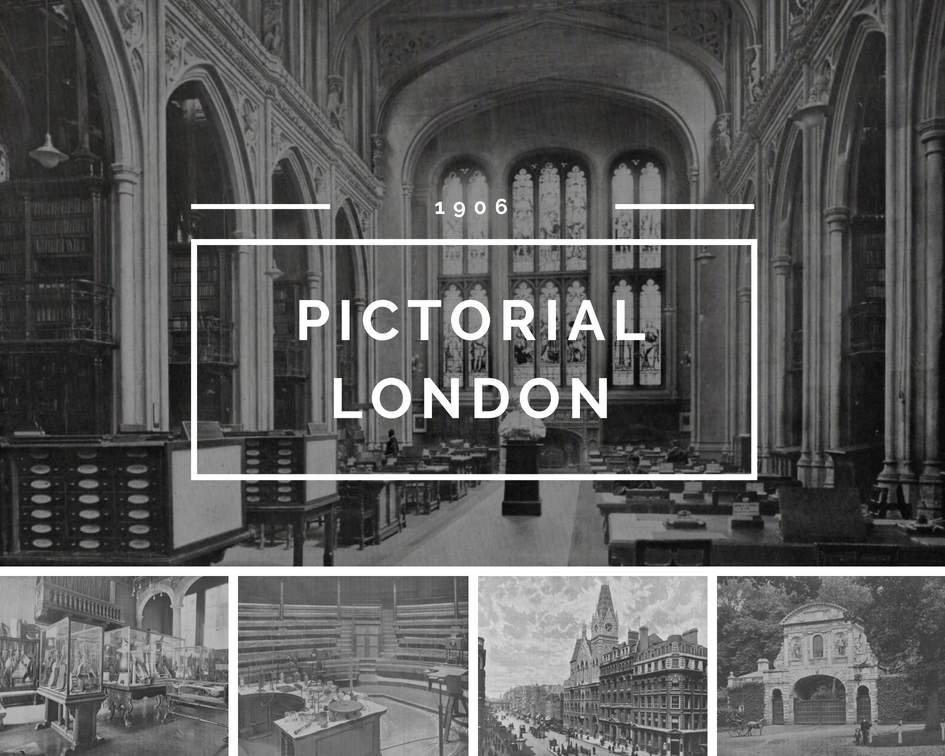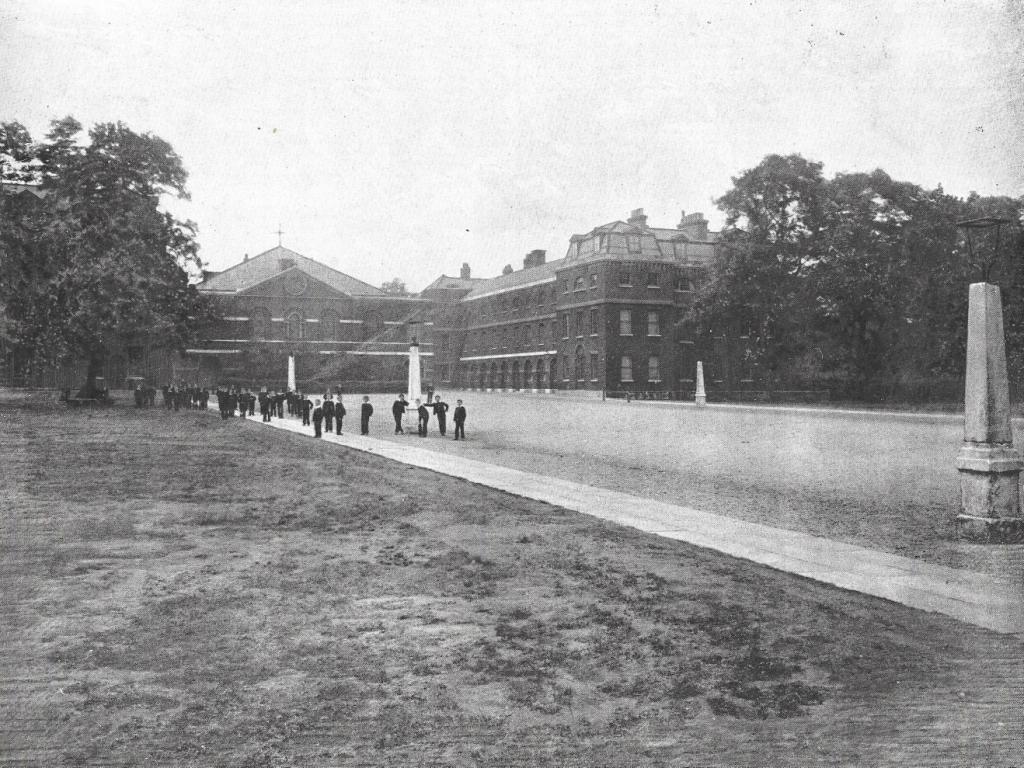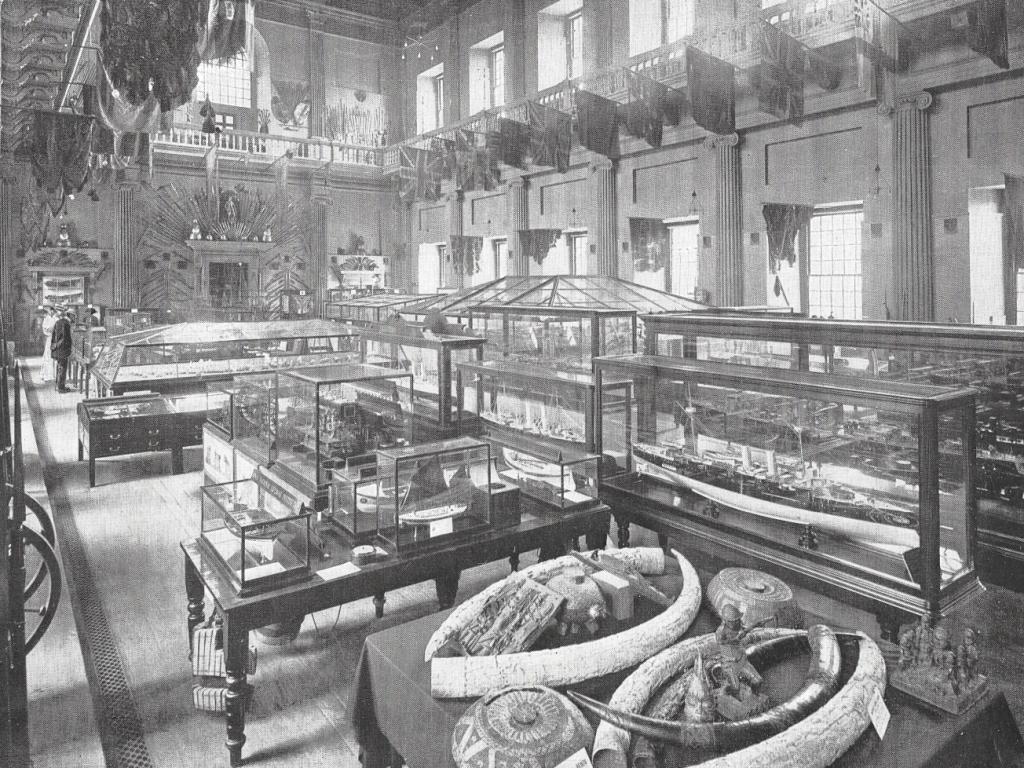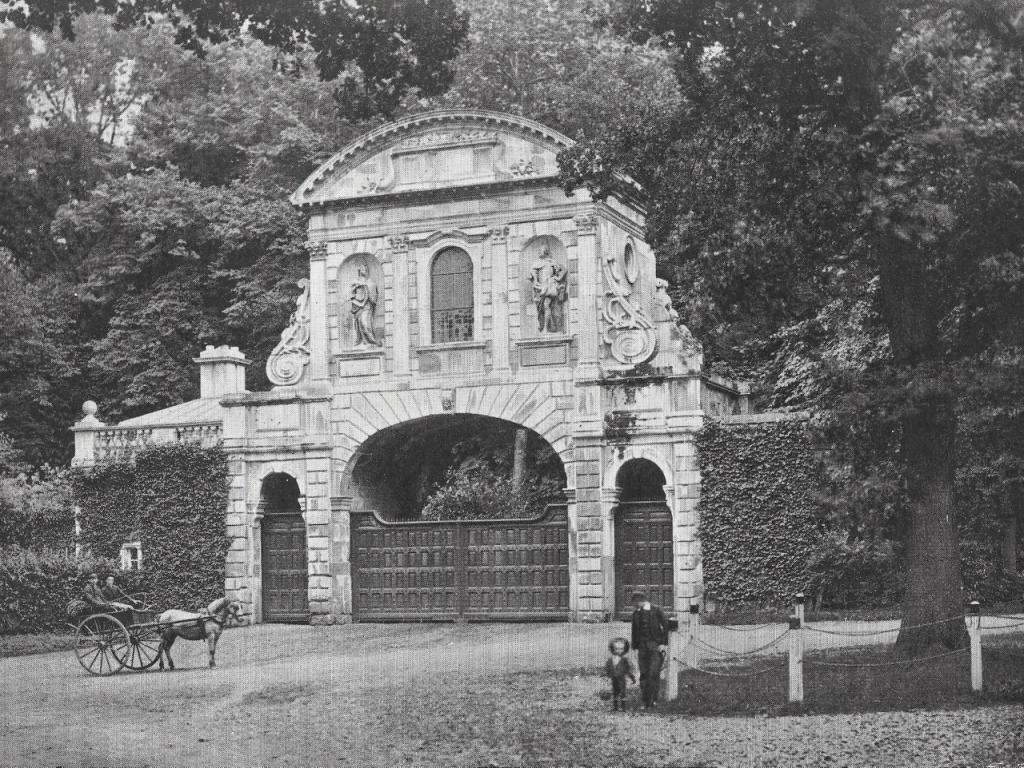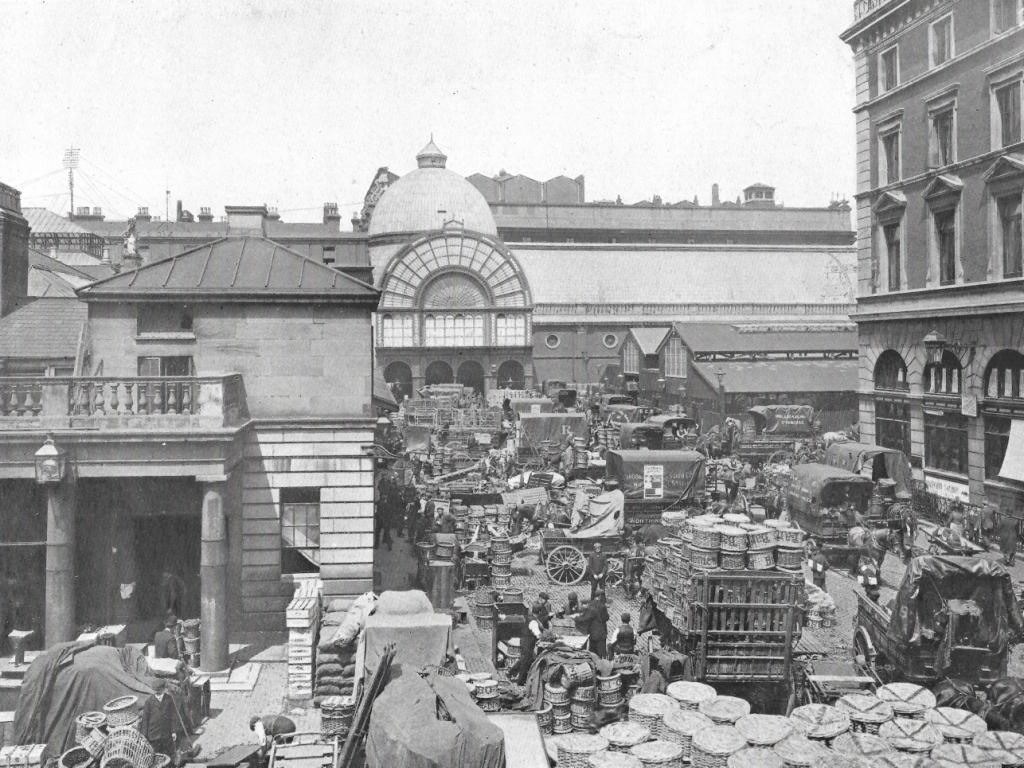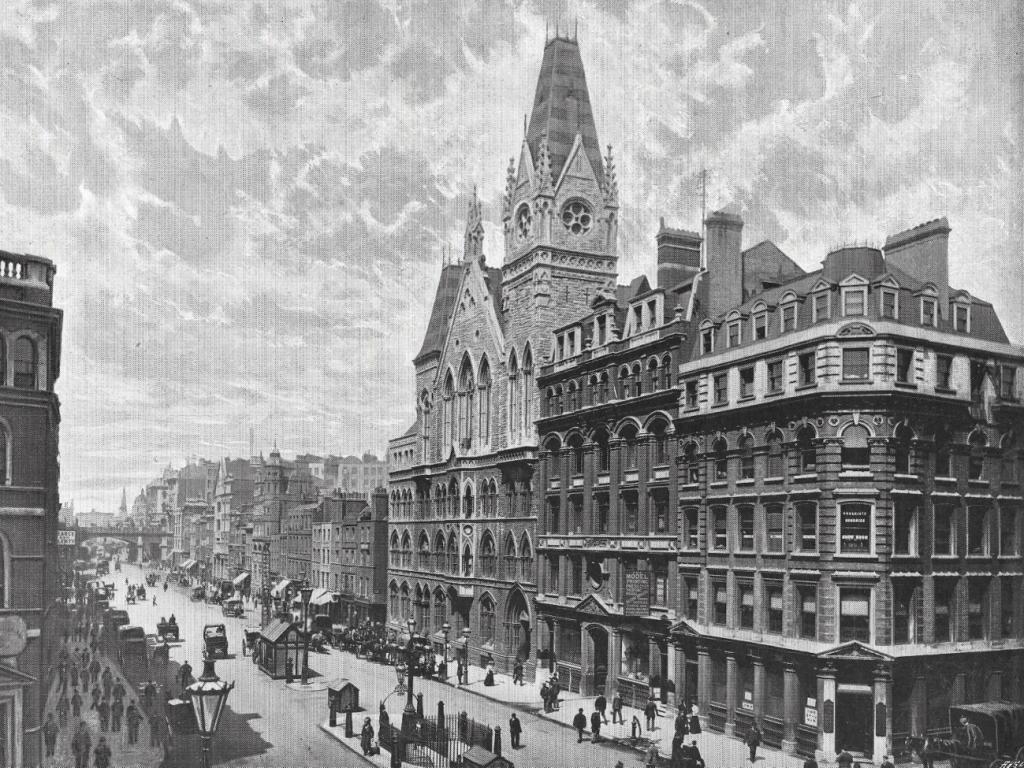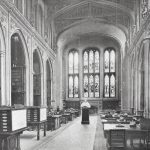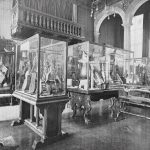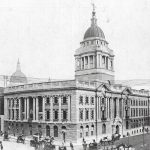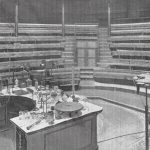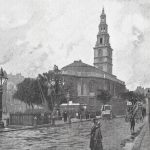A recent addition to my London books collection is Pictorial London: Views of the Streets, Public Buildings, Parks and Scenery of the Metropolis, published 112 years ago in 1906 by Cassell & Company.
It’s a hardcover green cloth-bound monster of a tome, containing 500+ black and white images, and part of a job lot I brilliantly sort of accidentally purchased* at auction from eBay UK. There’s accompanying descriptive text at the back of the book.
I initially thought the pictures were all photographs, until I noticed the far-too-conveniently-posed figures in many of them. In fact, a contemporary (1906) book review in The Spectator refers to them as drawings, so perhaps they’re a mixed bag.
Nevertheless, it was a treat to go through the many views of London (veracity taken, now, with a grain of salt). Some of the images were quite a revelation to me – and now I have more questions.
Unfortunately, the book itself turned out to be water-damaged and quite mildew-stinky, so I don’t think it’s staying long in the collection. However, I’ve salvaged and scanned a set of images that I found particularly interesting.
Please enjoy these five pictures and original text from Pictorial London, with a few comments from me. (Click/tap any image to open a larger version.)
1) The Foundling Hospital
I lived across the street from this property, now Coram’s Fields children’s park, when I was at school in London in 2011-2012 … and I don’t recall ever having seen a view of this building. (Alright, I must have seen something similar, when visiting The Foundling Museum, but for some reason it didn’t stick in my mind.) This looks more like a photograph than a drawing, yes?

The Foundling Hospital was demolished in 1926 (so not that long ago, really) and it’s fascinating to me that such an enormous structure can have so thoroughly disappeared. Some remnants of the original hospital do remain, though, such as the empty plinth on Guilford Street.
As one must be accompanied by a child to enter Coram’s Fields, I haven’t yet managed to visit, though I would still like to investigate the rest of the grounds. (I did, however, quite use to enjoy the sheep and goats who lived in the animal area around the edge. There was also a healthy, i.e. loud, rooster too, which I thought was pretty neat for central London.)
2) Interior of the Royal United Service Institution Museum
I’d never heard of this museum before. Looking harder at this image, though, I was thinking, hang on, this looks like the interior of the Banqueting House in Whitehall. And it is! The Dictionary of Victorian London by Lee Jackson has more on the United Services Museum.
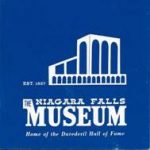
It’s really interesting to see a space that I’ve only observed as open and empty, having been put to another use. I’m thrilled to learn of the existence of another old fashioned case-and-label style museum in London too (which reminds me of the long-gone Canadian Niagara Falls Museum, est. 1827, a guidebook to which, from a childhood visit, is one of my treasured possessions).
What became of the Royal United Service Institution Museum? Apparently some of the artefacts, like Oliver Cromwell’s watch, went to the Glenbow Museum in Calgary in the 1960s! Must investigate further.
3) Temple Bar
I knew Temple Bar had been in Hertfordshire after it was removed from London, but I’d never seen a picture (photo?) of it in situ. Here’s a short video showing the poor state of Temple Bar at Theobalds Park in 1990.
The structure has been restored and was installed back in London in Paternoster Place in 2004. The dismantling and reassembling must have been an amazing process. Something to look into.
4) Covent Garden Market
What an amazing picture! Such a contrast to today. Carts and horses on the pavement where the Tuttons restaurant now has its outdoor seating (beside the building at right). All the bustle and baskets and crates on what’s now a piazza (outside my favourite Ben’s Cookies).
I’ve long wondered how these buildings, now full of shops, originally functioned. Shaw’s Pygmalion / My Fair Lady vision of the market would have been in the late 1930s, so thirty years after this picture, but probably (?) of a similar atmosphere. The market only moved out, to southwest London, in 1974, so it’s still very much within living memory.
The whole Covent Garden neighbourhood has a long, fascinating, and racy history.
5) The Memorial Hall, Farringdon Street
What is this?? An unfamiliar building. Not that that’s surprising, but it’s a joy to see something new (to me). At first I thought it might be the red terracotta Prudential Assurance Building on High Holborn, especially because … in the middle of the road, with the railing and descending stairs, is an underground public convenience (toilet) (as on High Holborn). Old photos of these are quite rare, so I’m really pleased to see this one (which will sound fairly odd, except that I wrote my MA dissertation on London sanitation, so I have a special interest).
The Congregational Memorial Hall in the picture (I’d say photo, except the people at bottom left look a bit sketchy?) was demolished in 1968. A new building went up called Caroone House, an office, Wikipedia notes intriguingly, “which was used by British Telecom for its international business and telephone tapping.” This in turn was demolished in 2004, and 5 Fleet Place now stands on the site.
What’s in the middle of Farringdon Road today outside 5 Fleet Place? Barriers with descending stairs, still leading down to those same underground public conveniences (long disused, unfortunately).
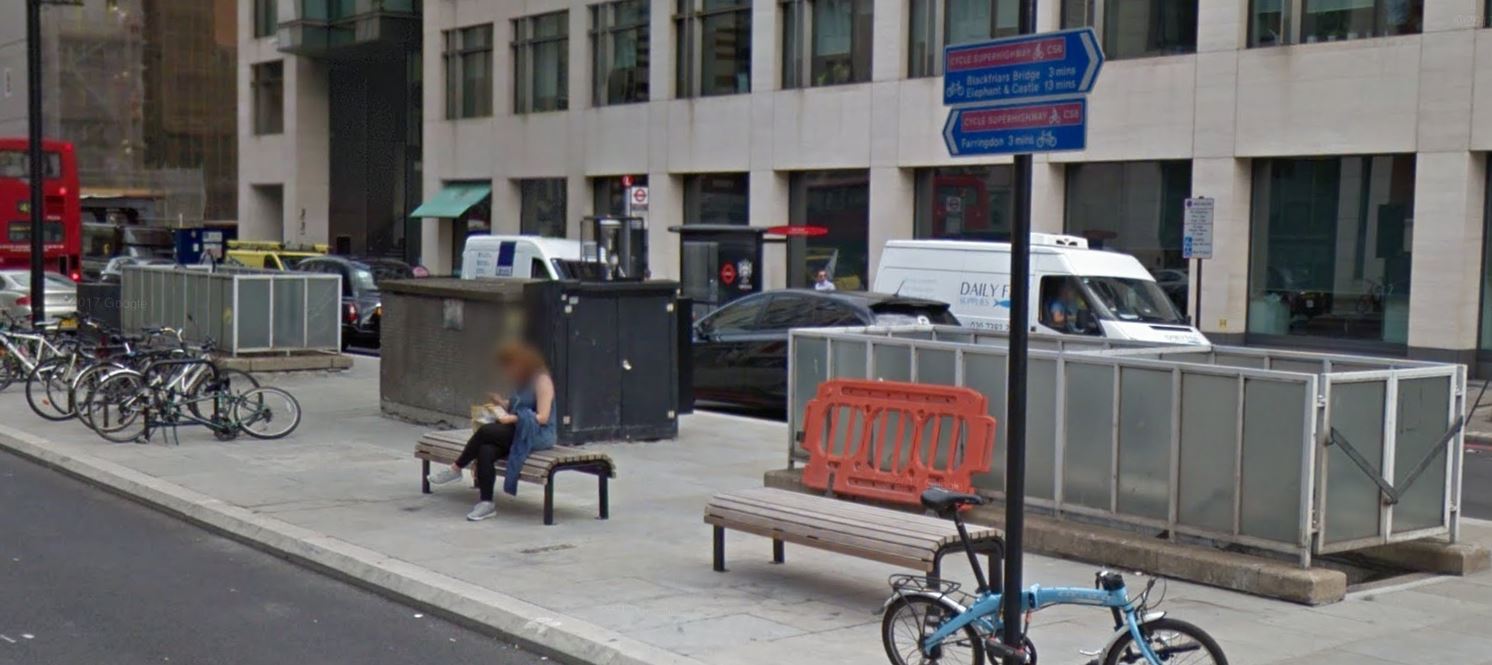
Here’s a small selection of other photos I found interesting, for one reason or another (click/tap to enlarge).
If you ever have a chance to look through Pictorial London: Views of the Streets, Public Buildings, Parks and Scenery of the Metropolis from 1906, it’s time well spent. There’s something in its hundreds and hundreds of images for any London lover.
* I followed a link from Facebook to an eBay auction of vintage London books on my phone before I went to sleep, and somehow managed to make a bid in the night. When I woke up – surprise! – I’d won, and was advised to collect the books ASAP in east London, as shipping to Canada was unavailable. Small panic … so an obliging friend very kindly collected the pile for me and stored them – for six months – until I could pick them up in person a few weeks ago.
If you found this post interesting, feel free to share it.

